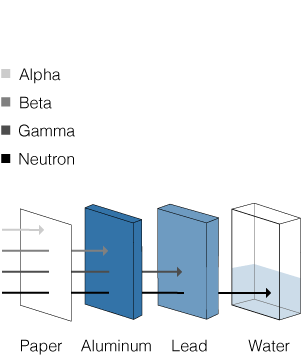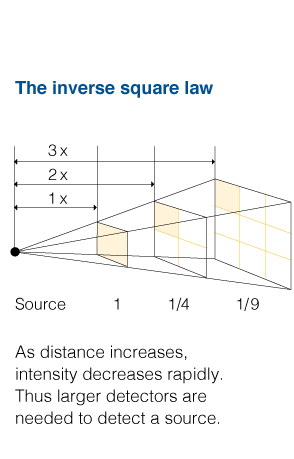
Reliable Radiation Detection
It is critical that reliable radiation detection and monitoring is used to prevent radioactive and nuclear sources from becoming a threat to health, the environment, and business. Here are three cases where efficient and reliable radiation detection equipment is in use:
Monitoring the nuclear fuel cycle
The nuclear industry produces 2,300 tons of spent nuclear fuel per year. Spent nuclear fuel contains Plutonium and Uranium, materials that can be used to build nuclear weapons. In most countries, permanent disposal facilities for nuclear waste have not been built yet, which increase the need for radiation detection.
Key: Devices for the inventory of spent nuclear fuel
Radioactive material out of regulatory control
In the US and Europe, 2.3 million radioactive sources have been in use in the last 50 years.
By 2015, the IAEA's Incident and Trafficking Database confirmed a total of 2,889 incidents involving illicit trafficking, theft and losses of nuclear and radioactive material.
Key: Devices to find smuggled or stolen radioactive materials
Radioactive sources entering supply chain
In several incidents, orphan radioactive sources have been disposed in recycling facilities and scrap metal depositories, resulting in radioactive steel.
Radioactive elevator buttons and belt buckles are known consequences of such misuse.
Key: Devices to monitor supply chains for "orphan" radioactive sources
How Does Radiation Detection Work?
Radiation emitted by a radioactive source interacts with a detection material.
Gamma and neutron radiation are the most penetrating
Radioactive sources typically emit alpha, beta, gamma and/or neutron radiation. The graphic on the right shows the penetration capability of each radiation type through different shielding materials. While alpha radiation is stopped by a piece of paper, gamma and neutron radiation are more penetrating and are thus the radiation of choice for standoff detection.
Detected radiation: counts vs spectrum
Gamma or neutron interactions with a radiation detection material result in either one count per detected particle or more information such as a spectrum by which different radioactive sources can be distinguished and categorized.

Challenges in Radiation Detection
Specialized equipment needed
Gamma and neutron radiation are not visible, does not have a sound nor taste. Specialized equipment is needed to make radiation visible.
Sensitivity – distance vs detector size
The further away the measurement instrument is from a source, the smaller the probability of radiation detection. And it is not linear. At three times the distance from a source, the probability of detection with the same device is not three times lower but around nine times (see figure on the right). For example if 90 gammas from a radioactive source go through a given detector area at 1 m distance, only 10 gammas from the same source arrive at the same detector area positioned at a distance of 3 m. Thus, to get a reasonable sensitivity, large area detectors are needed for standoff detection.
Minimal false alarms
Threats need to be distinguished from natural radiation (so-called background) and officially permitted sources to ensure minimal impact to daily operation. The more categorization information a detector provides, the easier it is to reject false alarms automatically.
Shielding
Gamma radiation can be shielded with relatively thin layers of dense material. For neutrons, larger volumes of shielding are needed.
Sensitivity to nuclear material
Some of the most dangerous materials (nuclear material) are only emitting small amounts of radiation. This needs to be distinguishable from background. Better background control improves device sensitivity. The more information that radiation detection can provide, the higher the chance is to detect such material through a smart decision tree.

